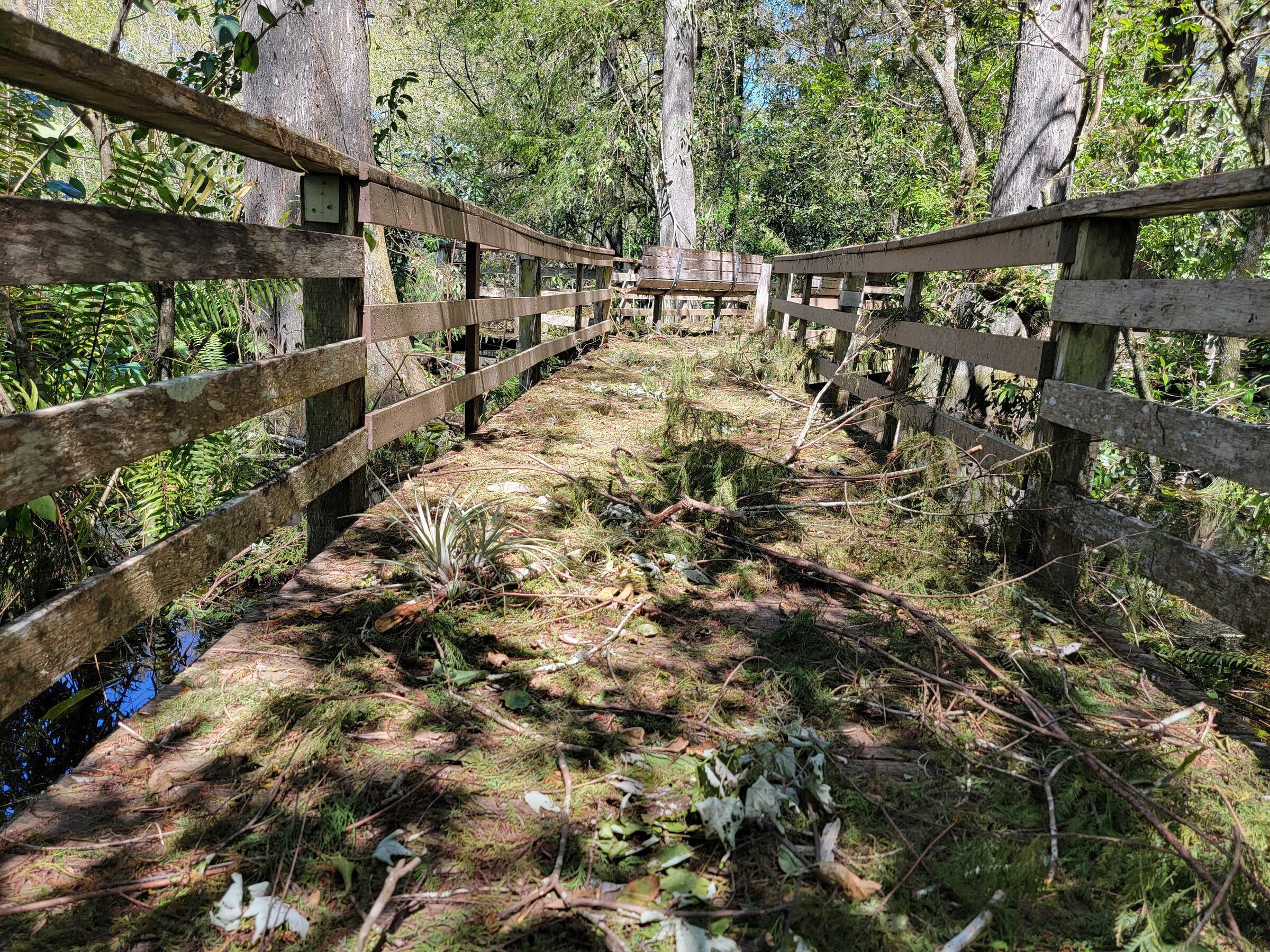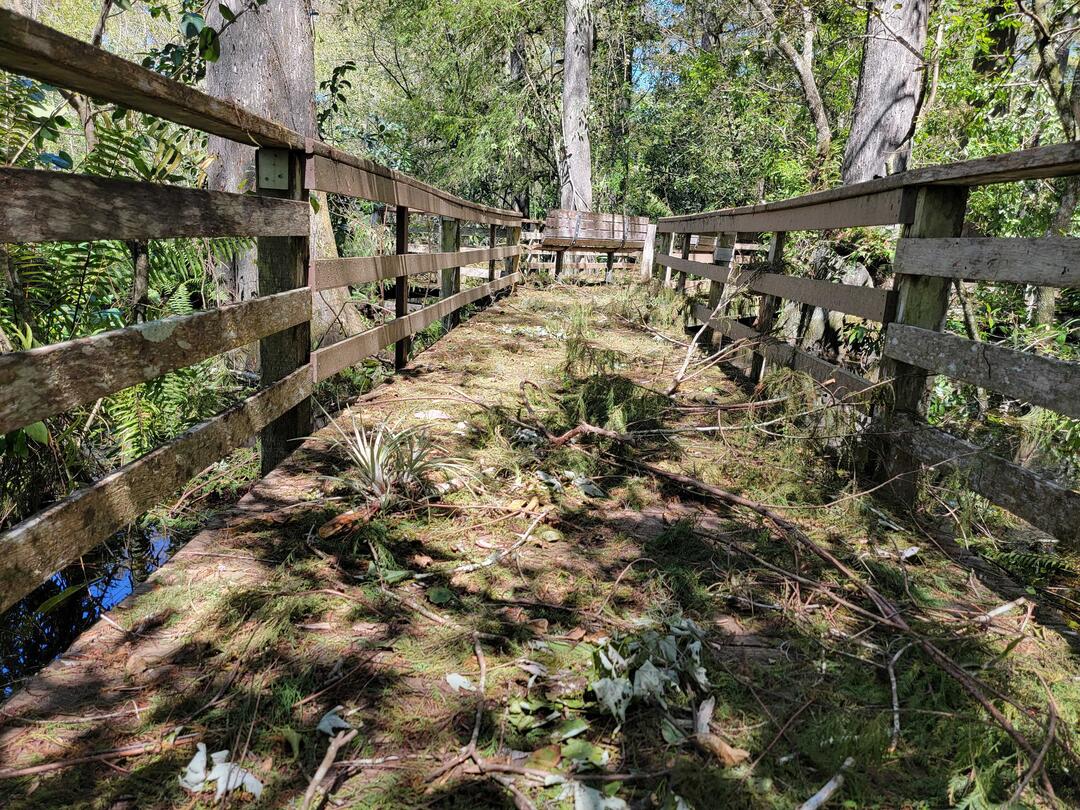Hurricane Ian significantly changed the shape of Southwest Florida’s coastline and the lives of many who live near it. Fortunately, Corkscrew Swamp Sanctuary’s iconic boardwalk and Blair Visitor Center sustained only minor damage.
Hurricane Ian brought record-breaking rainfall to Florida. Though Corkscrew Swamp Sanctuary remained on the “dry” side of the storm, we received 5.8 inches of rainfall over the course of four days. Additionally, data loggers recorded near record high water levels immediately following the storm.
This is the beauty and value of wetlands like ours: They protect habitat and local communities from flooding.
When so much rain falls in a short time, floodwaters must go somewhere. Our wetlands not only hold this water during severe weather events, but they also remove nutrients from surface water before it reaches the Gulf, reduce the risk of catastrophic wildfires in our communities, and provide habitat to many of Florida’s threatened and thriving wading birds, amphibians, reptiles, and mammals.
As rivers to the north of the Sanctuary finally crested, we watched as our restoration efforts improved conditions for wildlife while enabling this surface water to percolate down and recharge freshwater aquifers below ground.
“As storm impacts intensify with climate change, Corkscrew Swamp Sanctuary is proof that healthy, intact wetlands can provide critical flood and water quality benefits sorely needed in Florida. Elected officials, community leaders, and concerned Floridians should take note: The more wetlands we have in the Sunshine State, the safer we will be from the impacts of future storms.” — Shawn Clem, PhD, Research Director of Audubon Florida’s Western Everglades Research Center
By the Numbers
-
2ND RAINIEST IN 64 YEARS -- Hurricane Ian arrived at the end of a particularly wet September for Southwest Florida, bringing a lot of rain to an ecosystem that was already saturated. September proved to be the second rainiest in the Sanctuary’s 63-year rainfall record.
-
NEAR-RECORD HIGH WATER LEVELS -- Rainfall from Hurricane Ian, both in the Sanctuary and upstream in our watershed, led to near-record high water levels at Corkscrew Swamp Sanctuary.
-
4.18 FEET -- The Sanctuary’s “B Gauge,” a staff gauge located along the boardwalk at the North Lettuce Lake, has been collecting water-level data for 67 years and provides the most complete long-term water-level dataset in our watershed. Water levels at the B Gauge have only exceeded the 4-foot mark five times in the Sanctuary’s history, each time associated with a major tropical event: 1960 with Hurricane Donna, 1995 with Tropical Storm Jerry (followed by Hurricane Opal the same year), 2008 with Tropical Storm Fay, 2017 with Hurricane Irma, and 2022 with Hurricane Ian — reaching 4.18 feet.
This article was published in the Fall 2022 State of the Everglades report.





